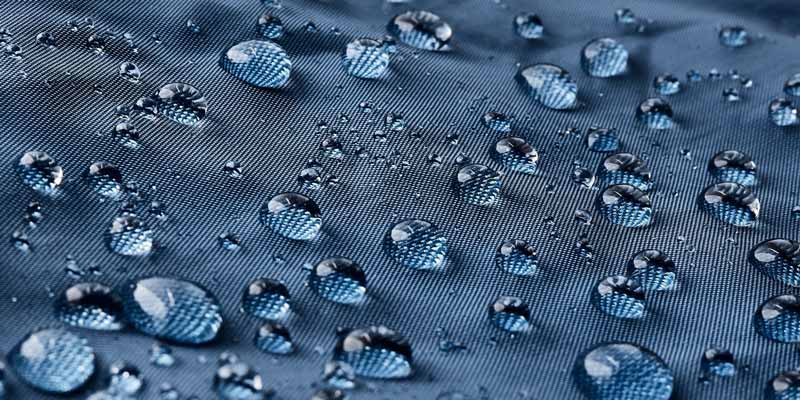Introduction
The pandemic outbreak has created extreme uncertainty in global market growth. The pandemic outbreak has affected and changed the complete dynamics of each industry in ways that are hard to believe. The effectiveness and strength of containment efforts to the degree of supply disruptions, shifts in investment patterns, changes in behavior (such as avoiding the purchase of costly products), the impact of drastic tightening in global market conditions, trust impacts, volatile commodity prices, and growing debt burdens.
A definition for the word ‘hydrophobic’ would be “tending to repel or fail to mix with water.” Coatings that offer a hydrophobic surface can impart multiple advantages to the coating surface and substrate to which they are applied. Advantages may include decreased dirt retention, self-clean ability, improved moisture, and corrosion resistance, as well as the extended life expectancy of the coating and substrate.
Accordingly, the surface characteristics can create different coatings, ranging from hydrophilic (water-loving) coatings to hydrophobic coatings, which are highly water-repellent. Several factors impact the contact angle of a water drop on the surface of a coating.
These include the macro, micro, nano-surface profile, and the surface tension of the coating on which the water droplet is resting. Surface tension is the elastic tendency of liquids that makes them acquire the least surface area possible. Hydrophobic coatings protect various materials such as metal, wood, plastics, leather, and fabric and non-fabric materials from the destructive action of water or wetting. They are used in machine building construction and textile production.
ANALYZING ON IMPACT OF COVID-19 ON THE GLOBAL HYDROPHOBIC COATINGS MARKET
COVID-19 pandemic hugely impacted the global hydrophobic coating market. Despite continuous growth during the last decade in the hydrophobic coating market recent COVID-19 outbreak resulted in a sharp decline in the market of hydrophobic coatings around the globe.
The decline in production due to the virus outbreak has affected the automotive industry in the country, thereby indirectly affecting the market for polyimide films used in multiple applications during body making.
AFTERMATH OF COVID-19 AND GOVERNMENT INITIATIVE TO BOOST GLOBAL HYDROPHOBIC COATINGS MARKET
The government has started giving utmost importance to automotive industries post COVID-19 pandemic. Governments around the globe are taking proactive measures which could boost the growth of construction industries. Since hydrophobic coatings are used mostly in building & construction industries it market is expected to gain due to government initiatives.
Automotive is projected to be the fastest-growing end-use industry of the hydrophobic coatings market during the forecast period. Increasing vehicle production is expected to drive the demand for hydrophobic coatings in the automotive industry.
STRATEGIC DECISIONS FOR MANUFACTURERS AFTER COVID-19 TO GAIN COMPETITIVE MARKET SHARE
Various proactive decisions have been taken by the manufacturers post COVID-19 to gain competitive market share. The global hydrophobic coating market is excepting high shares in the market due to the increasing demand for vehicles, increasing innovations in the aerospace industry, and increasing start-ups in the medical devices manufacturing sector.
Apart from the automotive industry, focus on the aerospace industry and increasing investments in the building & construction industry are also projected to increase the market share of the global hydrophobic coatings market.
Impact on Price
The COVID-19 impacts definitely on the price of the hydrophobic coating market. Due to lockdown around the globe and strict restrictions resulted in difficulties in lockdown around the globe and strict restrictions resulted in difficulty to transfer raw materials. Shortage of manpower in industries resulted in a hike in the price of hydrophobic coating materials.
The impact of COVID-19 has led to an increase in prices for all kinds of hydrophobic coatings which would hinder its growth in the market. The outbreak of COVID-19 around the world has led to a downfall in the growth of the economy due to the consumer spending fall and business shutdowns.
Impact On Demand
Amidst the COVID-19 crisis and the looming economic recession, the hydrophobic coatings market is expected to grow worldwide. The global crisis in all sectors, especially in shipping was hit by slowing demand in goods production as well as exports which eventually slowed down the hydrophobic coatings market during the pandemic. Amidst the pandemic situation around the globe, the hydrophobic coatings market is said to acquire implacable growth in the upcoming years.
Impact on Supply Chain
Due to the COVID supply chain of materials for most of the industries halted. Like other industries, the restrictions over transport and labor availability are also one of the factors that affected the supply chain of the hydrophobic coatings market. The advent of COVID-19 has acted as a potential restraint on the hydrophobic coatings market in 2020 as most of the supply chains were disrupted due to laid down restrictions as part of lockdowns imposed by governments across the world. The production of the hydrophobic coatings was also negatively affected due to breaking in the supply chains.
Conclusion
The growing demand for anti-corrosion, anti-icing/wetting, and self-cleaning hydrophobic coatings for cars is projected to fuel market demand over the upcoming years, the automotive sector was the largest application segment for the product. In regions such as North America, Europe, and the Asia Pacific, the automobile market is increasing dramatically and is expected to create new opportunities for business development throughout the projected timespan. It is anticipated that the aerospace industry will gain a share due to the improved usage of anti-corrosive coatings and anti-icing/wetting coatings. Furthermore, the growing application of the coatings in the optical industry in the manufacture of spectacles and goggles is anticipated to have a significant effect on the development of the sector over the coming years.






